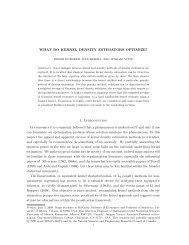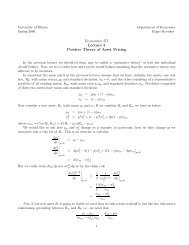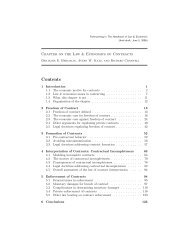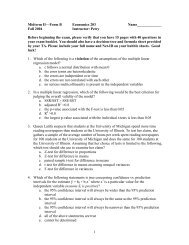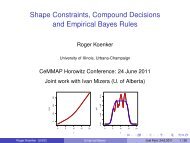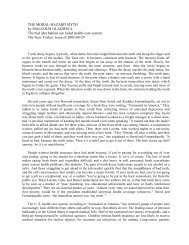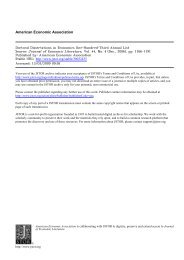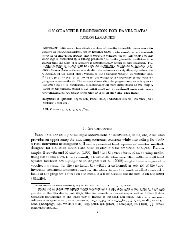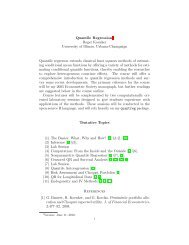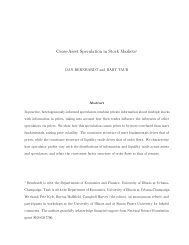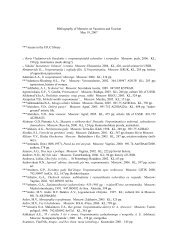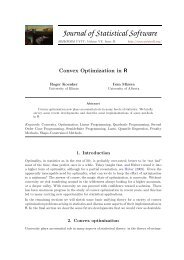1. Introduction - Econometrics at Illinois - University of Illinois at ...
1. Introduction - Econometrics at Illinois - University of Illinois at ...
1. Introduction - Econometrics at Illinois - University of Illinois at ...
You also want an ePaper? Increase the reach of your titles
YUMPU automatically turns print PDFs into web optimized ePapers that Google loves.
Roger Koenker and Zhijie Xiao 9Let X 1 ;::: ;X n be iid from F 0 ,soY i = F 0 (X i ); i =1;::: ;n are iid uniform,U[0; 1]: The empirical distribution functionG n (t) =F n (F ,10(t)) = n ,1 nXi=1I(Y i t):viewed as a process, is a submartingale. We have an associ<strong>at</strong>ed ltr<strong>at</strong>ion F Gn =fF Gnt :0 t 1g and the order st<strong>at</strong>istics Y (1) ;::: ;Y (n) are Markov times withrespect to F Gn ,th<strong>at</strong>isfY (i) tg = fF n (t) i=ng 2F Gnt .The process G n (t) isMarkov; Khmaladze notes th<strong>at</strong> for t 0,with G n (0)=0,thus(3.2)nG n (t) = n[G n (t +t) , G n (t)]This suggests the decompositionBinomial(n(1 , G n (t)); t=(1 , t))E(G n (t)jF GntG n (t) =Z t0)= 1 , G n(t)t:1 , t1 , G n (s)ds + m n (t):1 , sTh<strong>at</strong> m n (t) is a martingale then follows from the fact th<strong>at</strong>, from (3.2),E(m n (t)jF Gns )=m n (s)and integrability <strong>of</strong>m n (t) follows from the inequalityZ t01 , G n (s)ds ,log(1 , Y (n) );1 , swhich implies a nite mean for the compens<strong>at</strong>or, or predictable component. Substitutingfor G n (t) in(3.2)wehave the classical Doob-Meyer decomposition <strong>of</strong> theempirical process v nZ tv n (s)v n (t) =w n (t) ,01 , s dswhere v n (t) = p n(G n (t) , t) and the normalized process w n (t) = p nm n (t) convergesweakly to a standard Brownian motion process, w 0 (t); by the argument <strong>of</strong>Khmaladze(1981, x2.6).3.3. The Parametric Empirical Process. To extend this approach to the generalparametric empirical process, we nowletg(t) =(t; g(t) > ) > =(t; g 1 (t);:::g m (t)) >be a (m +1)-vector <strong>of</strong> real-valued functions on [0; 1]. Suppose th<strong>at</strong> the functions_g(t) =dg(t)=dt are linearly independent in a neighborhood <strong>of</strong> 1 soC(t) Z 1t_g(s)_g(s) > ds



